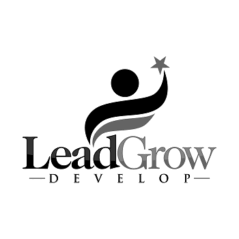Good operations in today’s fast-paced corporate environment depend mostly on efficient customer communication. Businesses that shine in this area usually have better brand recognition, higher degrees of satisfaction, and more loyalty. The difficulty resides in not only communicating but also doing so quickly while preserving quality. This article looks at doable tactics that can enable your customer communication approach to become a more effective system without compromising the human touch that consumers value.
Implementing Omnichannel Communication Solutions
A key first step toward effective communication is building a seamless experience across several platforms. Whether email, social media, phone, or chat, your clients want to get to you via their preferred means. These touchpoints are combined under an omnichannel approach into one system. This integration guarantees that consumer interactions move organically between channels without calling for information repetition. Modern consumers could begin an interaction on social media and want to carry it on by email or phone. Information moves with the customer when your systems cooperate, therefore producing a more unified experience. While preserving personalization, the customer service automation solutions already in use can assist in monitoring these exchanges across several platforms.
Developing Standardized Response Templates
Templates save time and make sure that everyone in your company is sending the same message. Standardized answers can be made for common questions, situations that happen often, and commonly asked questions. Each client’s requirements can be met by modifying these samples that serve as starting points. The important thing is to find a mix between personalization and efficiency. Effective themes have places to add information that is specific to the customer so that each message feels like it was written just for them. By means of a thorough template library arranged by category, team members can easily find suitable solutions. Frequent examination and improvements to these templates guarantee their accuracy and relevance. This method drastically lowers response times while yet keeping quality standards either meeting or beyond consumer expectations.
Utilizing Customer Data for Personalized Communication
Using consumer data helps to facilitate more focused and effective interactions. Your CRM system provides rich information on preferences, buying behavior, and past encounters. This knowledge lets you start from nothing each time and customize messages specially to fit unique demands. By removing pointless conversations, personalizing drives both effectiveness and efficiency. Knowing consumer preferences already helps you to offer pertinent answers faster. By pointing up trends in consumer behavior, data analysis also enables you to predict demands before they become clear. Using data-driven communication techniques ensures that every engagement builds on past information, so producing a total efficiency that advantages both sides of the transaction.
Establishing Clear Internal Communication Protocols
Your team needs clear instructions on how to handle different kinds of customer questions, such as which area handles which problems and how to get them to the next level. Clear rules keep things organized and keep customers from being transferred more than once. Adding an AI-powered virtual receptionist can boost productivity even more by making sure calls get to the right people on the team quickly. When complicated problems develop, internal communication systems should enable quick departmental cooperation. Documentation of typical issues and their fixes provides the team with an easily available knowledge base. Regular training guarantees that every team member can regularly apply these procedures and understand them. The whole customer experience benefits from more effective external communication, depending on how seamless your internal communication flows.
Measuring and Optimizing Communication Metrics
What you do not measure cannot be improved. Developing important performance metrics for customer communication offers the necessary understanding for ongoing development. Customer satisfaction ratings, resolution rates, and response times provide objective data on the effectiveness of communication. Frequent study of these indicators helps find areas where procedures may be streamlined, and bottlenecks could be found. By exposing trends in consumer inquiries, advanced analytics helps you create preemptive solutions for often occurring problems. Every cycle of optimization should concentrate on striking a balance between efficiency and quality so that developments don’t jeopardize the client experience. Methodical measurement guarantees responsibility and offers unambiguous proof of development over time, thereby guiding strategic choices on process enhancements and resource allocation.
Conclusion
Simplifying client correspondence is a journey rather than a goal. The techniques mentioned above offer a structure for raising efficiency while either preserving or improving quality. Your communication processes will be improved by applying omni-channel solutions, creating consistent templates, using customer data, defining internal procedures, and tracking pertinent KPIs. The most effective companies understand that efficient communication adds value all through the client relationship lifetime.

